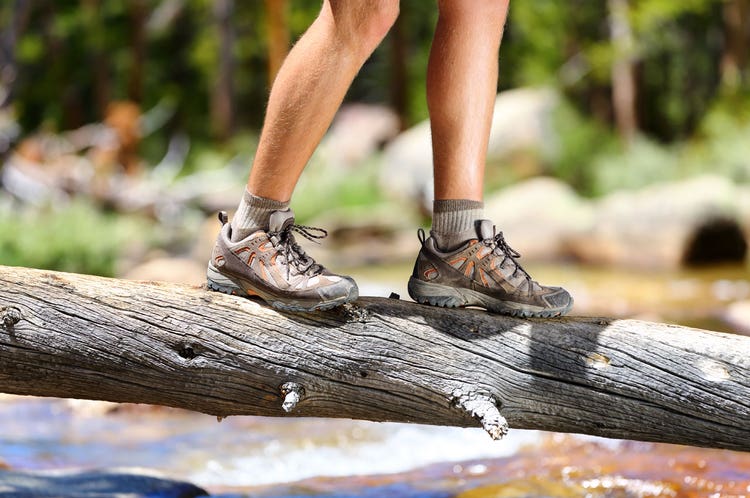The Science of Not Falling Down

Officially, balance is the control of the postural equilibrium required for optimal performance of the human body. Less officially, we think of it as the ability to walk, bike, surf, wear 4-inch heels, and climb stairs without falling down.
Sensory input from our visual, vestibular (inner ear), and touch receptors provide information about our position in space. The brain then signals reflexive or voluntary muscle actions that control our movement. Like flexibility, we can think about balance as static or dynamic.
- Static Balance: Maintaining the body’s center of gravity within a static base of support. Think stork stand, tree pose, and single-leg balance.
- Dynamic Balance: Controlling a moving center of gravity over a constantly changing base of support. This is important for both the simple activities of daily life, say climbing the stairs, and complex skills required in sport, such as making sudden changes in direction.
We use different strategies to maintain balance.
- Anticipatory Control: Stabilizing our bodies in anticipation of known events that may produce potential losses of balance. Think about stepping off an escalator or moving sidewalk—your body anticipates the change in the surface beneath you and, as you step off, adjusts to the difference quickly. This response is developed through experience. A child riding that escalator for the first time needs to learn how to anticipate the change.
- Reactive Control: Response to unexpected changes that cause our center of gravity to move away from our base of support. We have a righting response that can help us maintain balance during a small disruption (getting bumped in a crowd), but a larger push or shove requires changing our base of support to maintain balance. We do this by taking a few steps or grabbing hold of a support.
- Adaptive Control: The control of posture through the integration of sensory information and neuromuscular commands. This allows the body to modify what we pay attention to and how we move in response to the environment and situational changes.
Balance training is important for everyone—whether you’re rockin’ those 4-inch heels, running patterns on the field, or picking your way through a muddy section of the trail. And there’s no wiggle room for iffy balance when you’re training with free weights or facing down the balance beam on an obstacle course race. Next time, we’re going to take our base of support into the gym and test it out.
GET TO KNOW YOUR COG AND BOS
Center of gravity (COG) is the point our weight is evenly distributed around. The center of gravity is typically found in the sacrum, though its exact location varies by gender, body shape, body size, and even age. Our center of gravity shifts around as we move or add external resistance—when a sack of groceries, for instance.
Base of support (BOS) is the two-dimensional distance between our points of contact with a surface. For example, when standing with your feet 12 inches apart, the base of support is the area that your feet cover plus the area between them. Moving your feet closer together shrinks your base of support. A small base of support means more effort will be required to maintain balance.